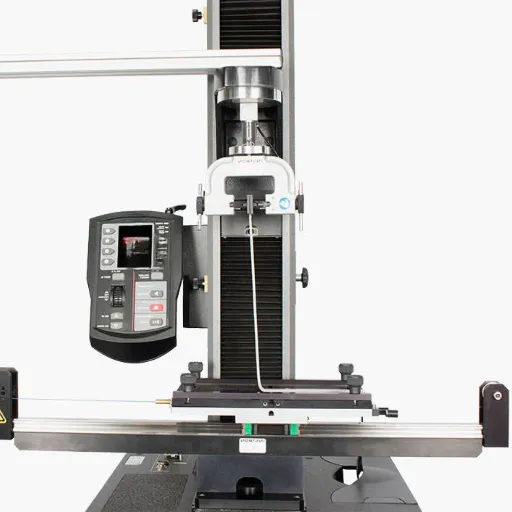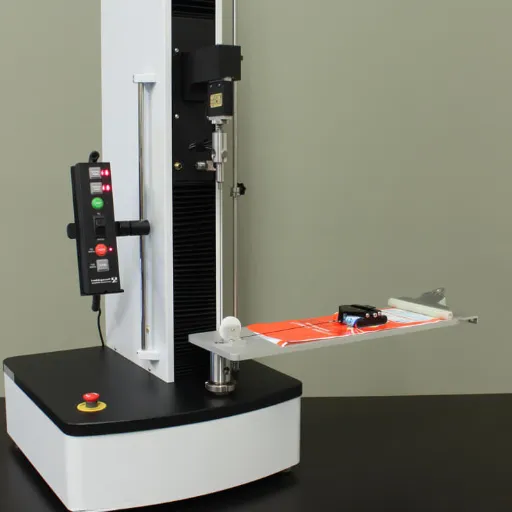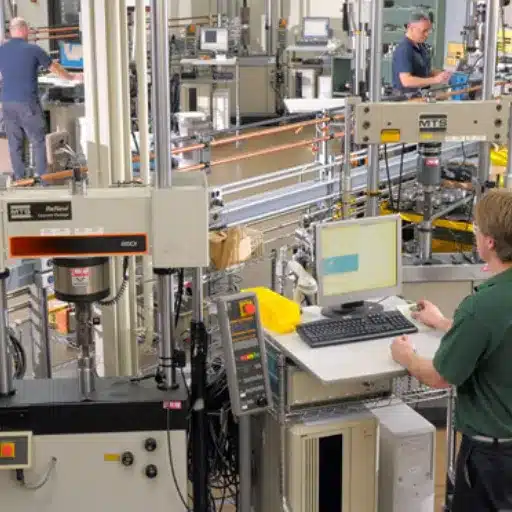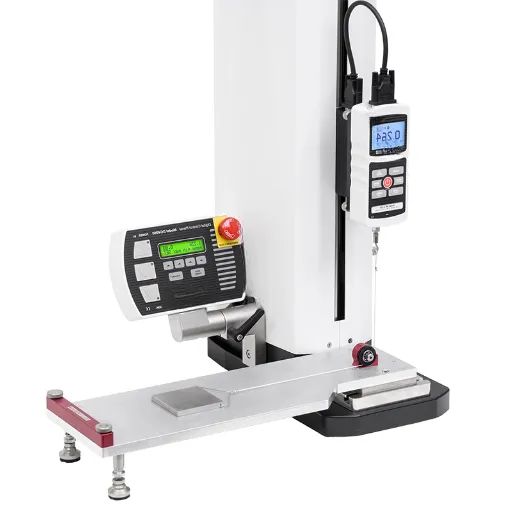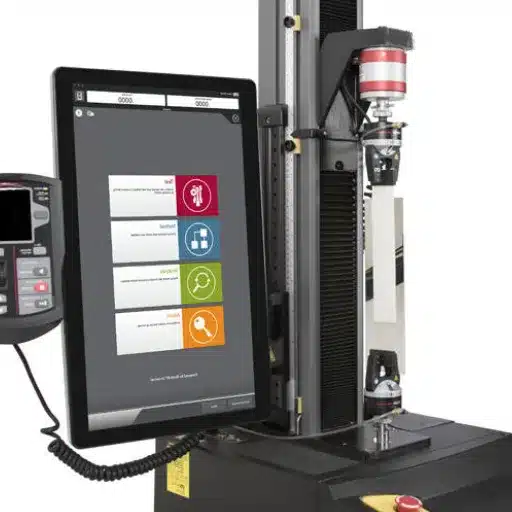A puncture test is a critical method applied in different industries for testing mechanical integrity, durability under stress, and performance of materials. On puncture tests, different packaging materials’ product resistance is checked or medico-level items are put to the test, or whether an industrial membrane is placed under stress to evaluate their resistance to piercing forces. Understanding the core procedures involved in the puncture testing process, why this testing protocol is considered so vital, and the level of applications this widely-used technique has in our present-day fields provides the reader with a full review from both a philosophy of theory and utilized orientation, which would give them an understanding of how this test is indirectly helping innovation and safety in multiple domains.
Introduction to Puncture Testing
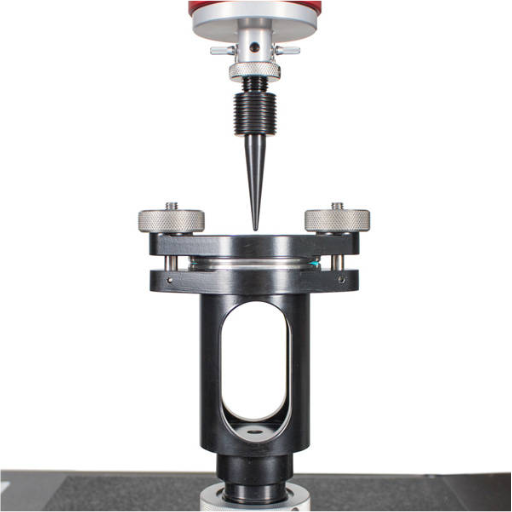
Puncture testing evaluates the ability of a material to resist penetration by a given force or object. It imparts crucial information on the durability and performance of materials subjected to stress, hence being an indispensable test with respect to packaging, medical devices, or construction industries. The simulated real-life conditions in the puncture test ensure the materials conform to safety and quality standards that ultimately aid in product reliability and user safety.
What is a Puncture Test?
A puncture test is a scientific method to determine a material’s resistance to being penetrated by a particular object or force. Puncture testing tests the force required to penetrate a material, thereby quantifying its mechanical properties, namely strength, elasticity, and toughness. Aeronautics, food packaging, and medical device manufacturing industries all use puncture testing to ensure that materials will withstand the stresses and hazards encountered during their actual use. The most recent procedures developed for the puncture test usually involve the use of modern equipment fitted with sensors with high precision to measure force and displacement parameters, which allow a more detailed analysis of material behavior. Recent reports reveal that developments in test methods such as automatic recording systems coupled with digital analysis tools in force measurement have improved puncture testing in terms of accuracy, reliability, and reproducibility, thus ensuring full compliance of materials with contemporary safety and quality regulations.
How Puncture Resistance is Measured
The test measures a material’s ability to withstand being penetrated, with the circumstances controlled accurately. The heavy-duty testing units provided with a puncture probe or needle come to the forefront of the testing scenario. While penetrating the specimen, the tester machine records the force at a constant rate required for penetration and the amount of deformation experienced by the specimen. Present industrial standards like ASTM D6241 or ISO 12236 serve as classic references for this kind of test because they ensure consistency and comparability of results. In such cases, real-time data capturing may be used to monitor the force-displacement curves meticulously, thus deepening our understanding of how the material performs under stress.
The Importance of Puncture Testing Across Industries
Puncture testing provides an essential assurance regarding reliability and performance of materials in industries like construction, medical industry, packaging, automotive, and so on. For earthworks and construction, geotextiles are tested to evaluate their behavior under the most extreme conditions thus the construction of a very effective base or containment system is guaranteed. Puncture testing in the medical field is used to assure the integrity of membranes, gloves, and other items of protective equipment so as to reduce risks of contamination. In packaging, the testing assures that materials resist piercing during storage and handling so that the products are protected and to limit wastage. In the automotive industry, puncture-testing techniques are used towards the design of materials that protect either their own or passengers’ safety, appearing in vehicle operation. Standardization of puncture resistance contributes to better quality, safety, and even efficiency in the world of industries.
Methods and Equipment Used in Puncture Testing
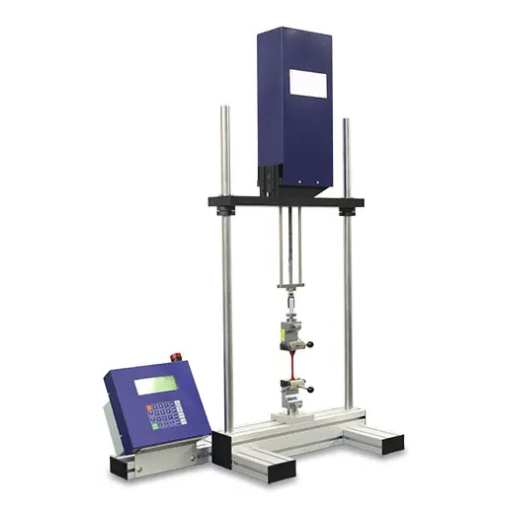
Designing the equipment and methods for testing the puncturing resistance of materials consists of a few standardized techniques. The main method for puncture testing consists of applying a pointed probe or stylus force with progressive increments to a sample until perforation occurs while noting the force level in order to ascertain the puncture resistance and failure level of the material.
Important equipment includes universal test machines equipped with puncture testing kits, which include precision probes and load cells for measuring force. These machines provide for set-up requirements to different standards such as ASTM or ISO to ensure compliance with industrial-accepted requirements. Specimen clamps and environmental chambers may be employed to simulate other conditions such as temperature or humidity, to better understand how the material performs under given conditions.
Overview of Puncture Test Methods
Puncture test methods are devised to determine resistance offered by materials to penetration by a sharp object under controlled conditions. These tests are important in ensuring that material premises hold good and can be made worthwhile in application, and they mainly include packaging, textiles, and protective equipment. Common standards for puncture tests include ASTM D4833 for geotextiles and ASTM F1306 for flexible barrier materials. Typically, during the setup of the test, the probe or needle of puncture equipment applies pressure to the test specimen at a controlled rate, and load and displacement values are recorded for computing parameters such as puncture resistance, energy absorption, and failure threshold of the material. More advanced setups can simulate working environmental conditions or probe geometries to emulate real-world applications. The resulting data can be used in developing product design, comparing materials, and quality control.
Types of Testing Machines and Their Functions
There are several types of puncture testing machines, including universal testing machines, peel and puncture testers, dynamic impact testers, and automated puncture testers, each designed for specific applications and testing requirements.
|
Type |
Function |
Key Features |
Parameters |
|---|---|---|---|
|
Universal Testing |
Measures puncture strength for diverse materials |
Versatile |
Load, Displacement |
|
Peel & Puncture Tester |
Combines peel and puncture testing analysis |
Precision |
Energy, Force |
|
Dynamic Impact Tester |
Simulates impact conditions dynamically |
Realistic |
Impact Velocity |
|
Automated Puncture |
Conducts high-efficiency automated tests |
High Throughput |
Speed, Accuracy |
Puncture Fixtures and Their Role in Testing
Puncture fixtures serve as an essential group of testing apparatus aimed at determining the resistance of materials when subjected to penetrating forces. By applying controlled loads through a sharp probe or standard needle to mimic puncturing conditions, the fixture measures such parameters as puncture strength, energy required to penetrate, and deformation characteristics. In industries ranging from packaging to medical devices, understanding the behavior of materials during stress conditions is imperative.
Cutting-edge systems use advanced puncture fixtures to simulate real-world conditions. For example, universal testing machines and peel & puncture testers use state-of-the-art instrumentation to measure load, displacement, and energy absorption. The dynamic impact tester simulates high-velocity impact scenarios, offering highly realistic data for many applications, especially in the creation of protective equipment and automotive materials. The automated puncture systems side of things should emphasize the increase in throughput and consistency allowed by integrated high-accuracy sensors and rapid testing cycles.
Hence, by employing these specialized puncture fixtures, industries can ascertain if materials meet standards and specifications and proceed with safer and more reliable designs for the products.
Applications of Puncture Testing
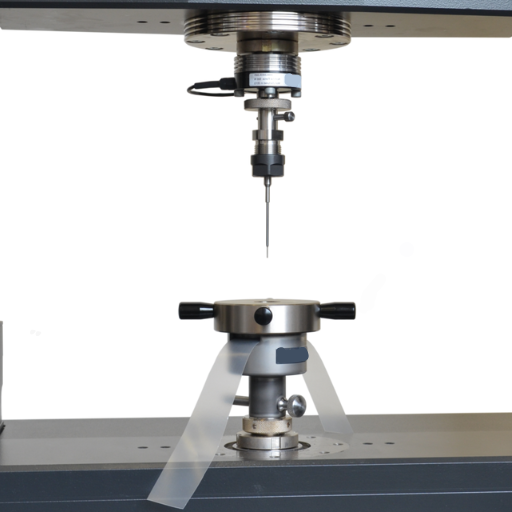
Puncture testing finds applications across a range of areas. It is widely used in the medical field to determine the puncture resistance of surgical gloves, medical membranes, or packaging for sterile supplies. Puncture testing is also a significant consideration in the automotive and aerospace industries, where materials such as tires, composites, and protective secondary coverings are evaluated for performance and safety under extreme conditions. The same test is employed in food packaging to evaluate the ability of films and containers to provide protection to the product for acceptance into quality standards. These applications clearly point out how the performance and safety of various items across industries are enhanced through puncture testing.
Testing Materials: Protective Gear and Packaging Films
Puncture resistance of protective equipment is assessed to ensure that materials used in gloves, body armor, or industrial suits provide resistance to penetration, within given force levels. This is important to ensure the safety of the wearer in hazardous environments, mostly within medical, military, and industrial environments. Films for packaging undergo puncture testing to ensure that materials can sufficiently resist mechanical stress during shipping and storage. The type of polymer used, the cytology, and film coating are parameters that are analyzed to assure the maintenance of sheath integrity to guard the contents on industry standards such as ASTM or ISO.
Industrial Applications: Membranes and Other Materials
Membranes are important for the construction of many industrial processes, including filtration, separation, and energy production. For example, polymeric membranes are widely applied to water treatment such as reverse osmosis, to remove contaminants from water and desalinate seawater. They are evaluated for permeability, selectivity, and chemical resistance to ensure its efficiency and durability under operational stress.
Furthermore, ceramic and composite membrane materials can be utilized as alternatives for chemical treatments at high temperatures or harsh environments, e.g., gas separation at the petrochemical level. Their microstructural integrity permits unaltered performance emanating from compliance to standards such as ISO 9001 or ASTM D7700. The efficiency and longevity of these materials are promoted through the usage of surface modifications like hydrophilic or oleophobic coatings, a more application-aimed approach. Marrying cutting-edge technological advancement with rigorous testing protocols continues to empower membranes to respond to increasing demands of world industrial processes.
Significance in Medical Device Manufacturing
Membrane technology constitutes the backbone of medical device manufacturing due to its ability to provide the utmost precision and reliability. In areas where membranes are a critical part of medical device manufacture, including diagnostic instrumentation, oxygenators, and drug delivery systems, filtration, separation, and controlled permeability need to occur. Their biocompatibility and capacity to comply with stringent regulatory standards, such as those from the FDA and ISO, render them absolutely necessary. In this field, moreover, the advance in microporous and nanofiltration membranes improve performance, achieving enhanced device fabrication with increased accuracy and better patient outcome. The technologies comply with the demands of the healthcare industry and in doing so uphold the innovation in the medical device sector.
Standards and Certifications in Puncture Testing
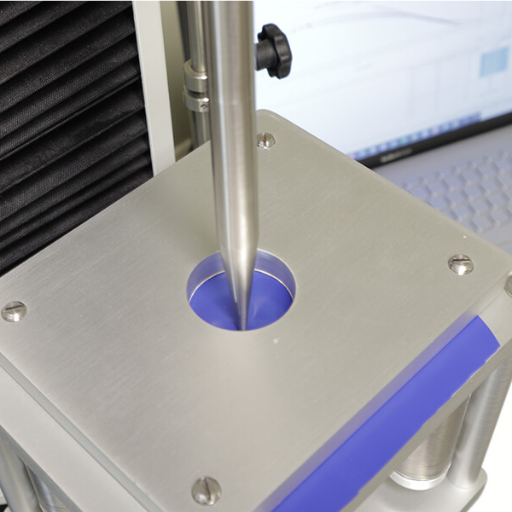
Various stringent standards and certifications govern puncture testing for medical devices in terms of quality, safety, and performance. ASTM F1342 stresses some procedures to test the resistance to puncturing of protective materials, and another important standard is ISO 11607, which includes requirements regarding packaging for a terminal-sterilized medical device. According to these standards, devices should be able to endure mechanical stresses they encounter during use and handling, thus precluding any failure of the materials that would pose a threat to patient safety. Further, as part of obtaining clearance or approval, the industry faces the finality of validation protocols demanding the testing of resistance against puncture from the FDA, further underscoring the importance of such testing procedures for regulatory compliance.
Key ISO Standards for Puncture Resistance Testing
In checking the key ISO standards for puncture resistance testing, one must keep in view the following with respect to medical devices:
1.ISO 11607-1 and 11607-2
These standards set forth a host of requirements for the materials, design, and validation of packaging systems for sterilized medical devices. Under these standards, puncture resistance tests become an important parameter to ascertain whether packaging can maintain sterility during handling, storage, and transportation.
2.ISO 7765-1
This standard mainly covers the drop tests for plastics packaging under impact testing, including the puncture testing. It is often used to determine the physical durability of medical device packaging materials under simulated conditions.
3.ISO 374-4
This standard is to specify the method of determination for the resistance to puncture of protective gloves from sharp objects. For medical use, it means that the gloves must protect against such risks as a needle puncture.
The standards cover the packaging and functional applications of medical devices and list puncture resistance as a key parameter for ensuring safety and compliance through a variety of practice environments.
Understanding Compliance and Quality Assurance
Compliance and quality assurance systems are at the very core of the integrity, safety, and efficacy of medical devices. Compliance entails obeying the regulatory framework set forth by FDA regulations or ISO standards, which specify exact requirements for design, manufacture, and testing processes. Quality assurance, meanwhile, is concerned with the processes applied to verify that medical devices are consistently made to these standards under rigorous inspection, documentation, and performance validation. Hence: mitigating risks, put in greater reliability, and maintains the highest ethical and legal considerations to foster a healthy relationship among users and stakeholders.
Impact of Standards on Industry Practices
Coming to the application of standards to industry practices, somehow I see that they create consistency, render operation efficient, and ensure compliance among the industry’s members. ISO and FDA regulations set up standards manufacturers have to comply with for ensuring safety, reliability, and quality in medical devices. I personally believe that compliance to known standards brings down operational hazards and paves the way for new concepts by bringing in best practices and state-of-the-art technologies. From another angle, when institutionalized among disparities in standards, it is easy for consumers and other stakeholders to be prejudiced in favor of that company, thereby providing them an advantage both at the home front and beyond.
Conclusion: The Value of Puncture Testing
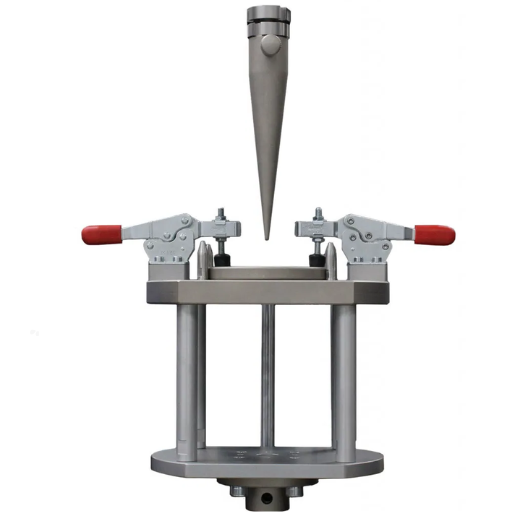
Puncture testing must be deemed vital when testing for product durability and material functioning, especially in life-critical applications such as medical devices. Puncture testing simulates actual usage situations and generates results that can demonstrate the ability of a material to resist forceful mechanical impact and thus achieve stringent safety requirements. This way, it practically eliminates product failure and positively instills confidence in the end-user, making it an unfailing quality assurance step and regulatory requirement.
Ensuring Product Quality and Safety
Manufacturers further punishingly test the products for quality and safety in accordance with the calibration set forth in one of the prevailing industrial standards, such as ISO and ASTM. This may comprise mechanical testing, chemical analysis, and performance testing to check for any defect and prove durability. Quality control methods such as Six Sigma or TQM may be involved at the production stage to also ensure monitoring and improvement of processes. Such products under the governing body of the FDA, CE, or other attendant national agencies are thus compelled to comply by meeting the minimum safety standards for the use specified.
The Role of Puncture Testing in Consumer Protection
Puncture testing plays a fundamental role in ensuring the safety, reliability, and performance of consumer products largely in packaging, medical appliances, and personal protective domains. It determines a material’s capacity to endure punctures or piercing forces that are likely to be in effect if the product is taken to the real world. It seeks to call out weak junctures or through evaluation at places where the puncture would affect material durability to help manufacturers work on better material properties toward product reliability under stress.
Puncture testing protects the consumers by ensuring that the product can meet stringent safety standards and regulatory guidelines like ASTM or ISO standards. Packaging materials for food products and pharmaceutical medicines are benefitted from puncture resistance to work against contamination, and medical gloves and surgical gowns are tested to provide certification in protection against hazardous punctures. It will work equally well to lessen any kind of hazard when incorporated into the quality assurance procedure, and that can also add to building consumer trust through delivering goods with performance-based credibility.
Future Trends in Puncture Testing Technology
Puncture testing technology is expected to be changed from now on through advanced instrumentation and a data-fed approach. The major evolution would be fully automated testing systems that deliver testing precision and repeatability while eliminating human error. In parallel, innovation in material science is likely to propel the design of more sensitive measurement systems to address the challenge of characterizing increasingly complex materials such as nanomaterials and composites. Consequently, real-time data analytics and AI will accommodate quicker test cycles, providing predictive insight into optimizing material performance. These emerging technologies will thus be someday called the new standards in efficiency, flexibility, and applications of puncture testing research.
Reference Sources
-
Puncture Resistance Testing: Methods, Applications, Standards (Biopdi) – Explains the equipment, methods, and significance of puncture resistance testing.
-
Puncture Testing (ADMET) – Provides insights into the mechanics of puncture testing, including tear and stiffness measurements.
-
Puncture Testing Guide (Universal Grip Co.) – Discusses the applications of puncture tests in industries like packaging, medical devices, and consumer products.
-
What is Puncture Test? (Light Salt) – Highlights the importance of puncture tests for protective clothing, industrial fabrics, and packaging materials.
-
Puncture Test EN 14477, ASTM F1306 (ZwickRoell) – Focuses on puncture resistance standards and their relevance in packaging materials.
Frequently Asked Questions (FAQ)
Q:What is a puncture test?
A:It’s a specific type of test aimed to measure the resistance of materials like plastics and flexible barrier films from being punctured or penetrated. This test was conducted to measure the amount of force needed to puncture the material, and thus assess its rupturing ability under certain conditions wherein such applications may be required.
Q:How does the puncture resistance test operate?
A:The puncture resistance test mainly uses a testing machine system: generally a universal testing machine fitted with a puncture fixture. The specimen to be tested is brought into a controlled environment. A force is imposed on the specimen through an actuator until the specimen fails or ruptures under that force. This method allows one to accurately measure the amount of energy required to perforate the tested material.
Q:What type of materials can be affected by test for puncture resistance?
A:Various types of materials may be subjected to puncturing resistance. These include flexible barrier films, laminates, geotextiles, and other geotextile-related products. A test of this nature can yield pertinent information about the capacity of plastic films and other materials to withstand an amount of penetration trauma during industrial use of these materials.
Q:What are the different test procedures for puncture testing?
A:Standardized test procedures for typical puncture tests include ASTM D5748 and ISO 6603-2. They will ensure the repeatability of test results, and their comparability across materials and applications. The test comprises utilizing specific test fixtures and testing systems in order to yield an accurate value of the puncture strength of the test sample.
Q:What is the importance of the knowledge about puncture resistance?
A:Knowledge of puncture resistance is valuable in many industries where products penetrate materials resisting high stresses. This knowledge will assist in identifying which materials can be used as packaging, construction, and so on, where there may be a puncture impact. This knowledge also correlates to quality control and product development.
Q:What equipment is used in puncture testing?
A:Puncture testing employs normally a universal testing machine linked with a puncture testing fixture. The use of such equipment guarantees precise control over the testing process and accurate measurement of the puncture force. The machine also accepts a variety of different test specimens to conduct tests on different materials.
Q:What factors affect the puncture resistance of materials?
A:Factors that could enhance puncture resistance are hardness, thickness, and composition. Others include conditions of static puncture testing such as temperature and humidity, which can affect the results. Understanding them would allow the manufacturer to enhance the performance of their materials.
Q:How does one increase puncture resistance?
A:Puncture resistance can be increased by changing the material formulation, increasing thickness, or adding additives that enhance toughness. Manufacturers can also use processing techniques to enhance the overall durability and strength of the material against puncture forces.

